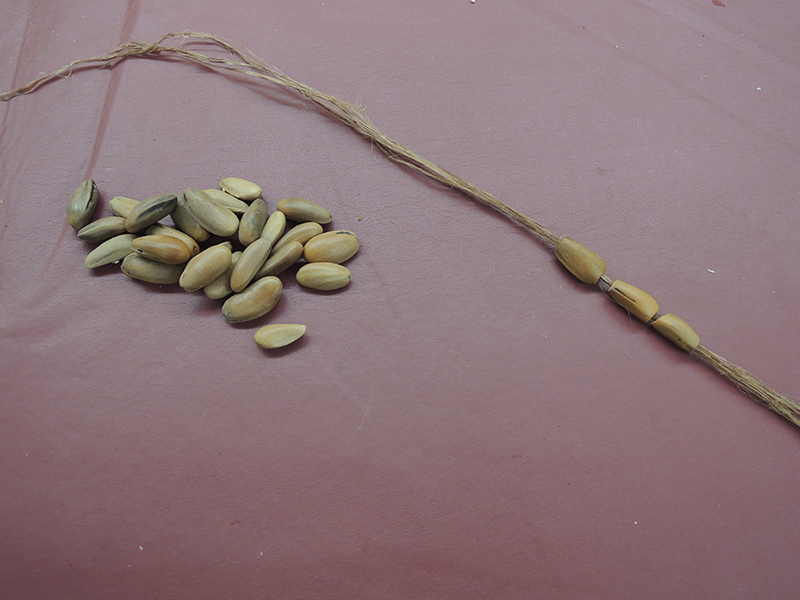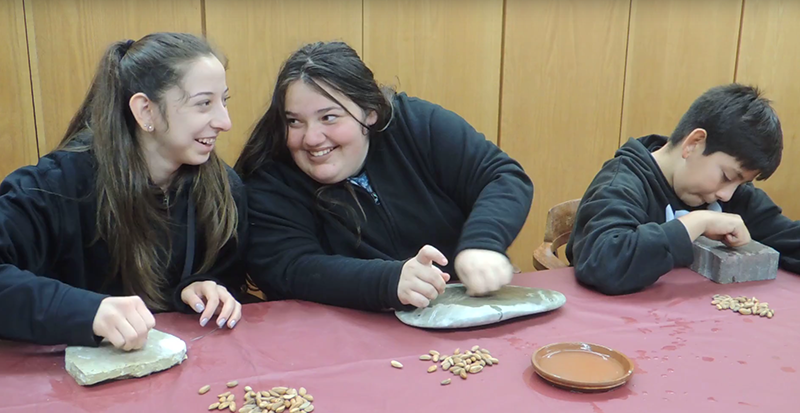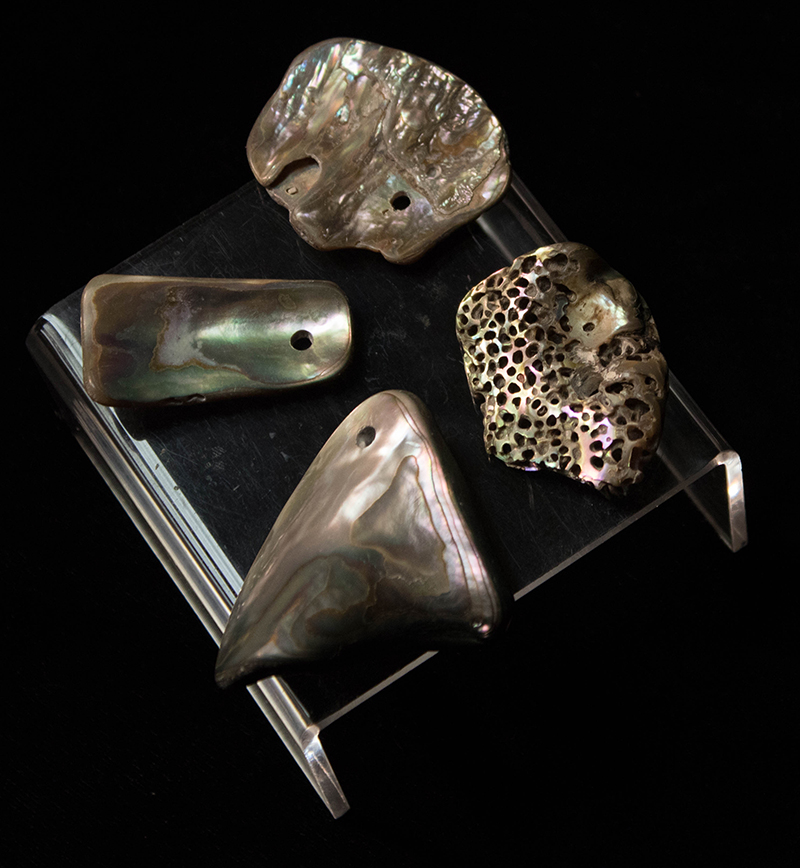From Nut to Bead
Ohlones and Miwoks enjoyed eating gray pine nuts, despite their relatively small size and thick, hard shells. Ohlones chewed gray pine pitch to treat rheumatism.
Today’s Ohlones and Miwoks use the thick-shelled gray pine nuts to create beads, just like their ancestors. They use these beads as elements of ceremonial regalia, often in combination with whole olivella shell beads, clam shell disk beads, and abalone pendants.
In recent years, members of Ruth’s family have begun to make pine nut beads for use on necklaces. These serve as visible symbols of cultural identity and pride.


Making Pine Nut Beads
To make pine nut beads, first harvest the ripe, but closed cones with prayerful thoughts, actions, and offerings.
When the cones have dried and opened, place them upright on the ground.
Hit the top of the cones with a carefully-selected, smooth, river-rounded rock.
To make the beads, sand each nut until an opening has been created on each end. For an old-time method, sand against a flat piece of sandstone. For a modern method, use large grit sand paper.
In the absence of an old-time, fine-tipped chert drill bit, push the nutmeat out with a thick-wired paper clip, an idea innovated by the late Vivien Hailstone (Karuk, Yurok, and member of the Hoopa Valley Tribe).


From Shell to Identity Symbol
“It’s important to me for my grandchildren and great-grandchildren to learn these things, because we didn’t know growing up how they did the jewelry…. I’m glad the kids are doing it now, and hopefully it will continue for generations to come.”
--Ruth Orta
Ohlones and Miwoks made their earliest beads from whole olivella shells, followed by squared and drilled olivella-shell pieces, and then rounded ones. Rounded and drilled Washington clam shell disk beads and drilled abalone pendants came next.
Ohlones and Miwoks used shell beads and abalone pendants to adorn dance regalia. As valued objects of trade, shell beads and abalone pendants travelled long distances from their point of origin.
Today, Ohlones and Miwoks continue to use shell beads and abalone pendants as elements of dance regalia. They also use them as part of necklaces that express cultural identity, sometimes made-for-sale.
Drilling Shell
In the old-days, Ohlones and Miwoks drilled holes in shell beads with chert drill bits mounted in hardwood spindles. They spun the spindle back and forth between the palms of their hands while, at the same time, pushing down against the shell.
After Spanish colonization, Ohlones and Miwoks began making “pump drills” by adding a cross-piece to the spindle, fastened with cordage. Metal drill bits, sometimes modified nails, also began to replace those of chert.

